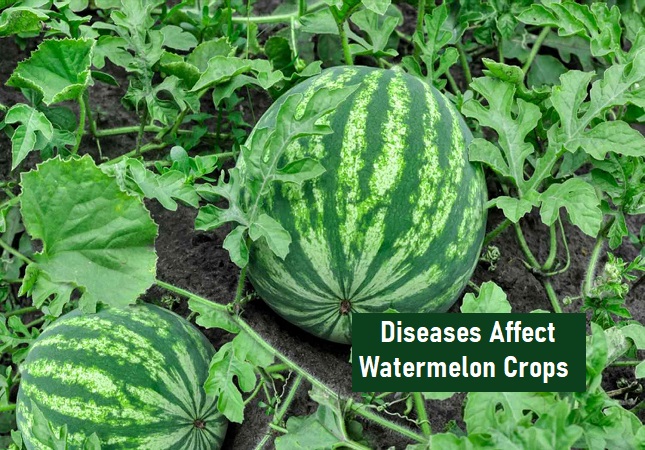What are the diseases that commonly affect watermelon crops in Tamil Nadu?
Watermelon crops cultivated in Tamil Nadu are susceptible to various diseases that can significantly impact their growth and yield. The region's climatic conditions, soil composition, and farming practices contribute to the prevalence of certain diseases. Let's explore some of the common diseases that affect watermelon crops in Tamil Nadu:
-
Anthracnose (Colletotrichum lagenarium): Anthracnose is a fungal disease that affects watermelon plants, causing dark, sunken lesions on leaves, stems, and fruits. In humid conditions, the disease spreads rapidly, leading to fruit rot and yield loss. Fungicide applications, crop rotation, and planting disease-resistant varieties can help manage anthracnose.
-
Fusarium Wilt (Fusarium oxysporum f. sp. niveum): Fusarium wilt is a soil-borne fungal disease that affects watermelon plants, causing wilting, yellowing, and stunting. It clogs the water-conducting vessels, leading to water stress and plant death. Crop rotation, soil sterilization, and planting resistant varieties are effective strategies for managing fusarium wilt.
-
Powdery Mildew (Podosphaera xanthii): Powdery mildew is a fungal disease characterized by the formation of powdery white or grayish patches on watermelon leaves, stems, and fruits. It thrives in warm and humid conditions, hindering photosynthesis and reducing yield. Fungicide applications, proper plant spacing, and maintaining good airflow can help control powdery mildew.
-
Downy Mildew (Pseudoperonospora cubensis): Downy mildew is a destructive disease caused by a fungal-like organism that attacks watermelon foliage, causing yellowing, angular lesions, and a fuzzy grayish mold on the undersides of leaves. It spreads rapidly in cool and humid conditions. Fungicide applications, regular scouting, and resistant varieties are essential for managing downy mildew.
-
Bacterial Fruit Blotch (Acidovorax avenae subsp. citrulli): Bacterial fruit blotch is a bacterial disease that affects watermelon fruits, causing dark, sunken lesions with water-soaked appearance. It can lead to fruit rot and post-harvest losses. Seed sanitation, crop rotation, and avoiding overhead irrigation can help prevent bacterial fruit blotch.
-
Cucumber Mosaic Virus (CMV): Cucumber mosaic virus is a viral disease transmitted by aphids that affects watermelon plants, causing mosaic patterns, stunted growth, and reduced fruit quality. Controlling aphid populations, using virus-free seedlings, and removing infected plants can help manage CMV.
To effectively manage and prevent these diseases, it is important for farmers in Tamil Nadu to implement integrated disease management strategies. This includes practicing good crop hygiene, using disease-resistant varieties, optimizing irrigation practices, adopting proper crop rotation, and timely application of fungicides or other recommended treatments as per agricultural extension services' guidance. Regular monitoring and early detection of disease symptoms can also aid in implementing timely interventions to mitigate disease outbreaks and minimize yield losses.

